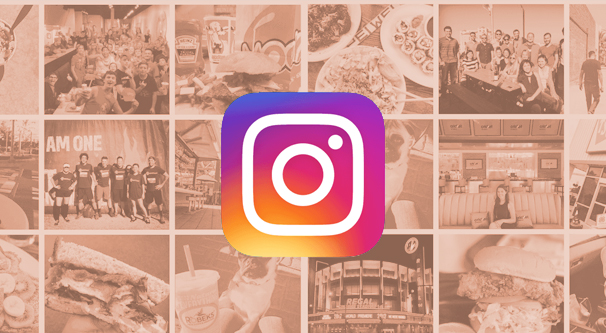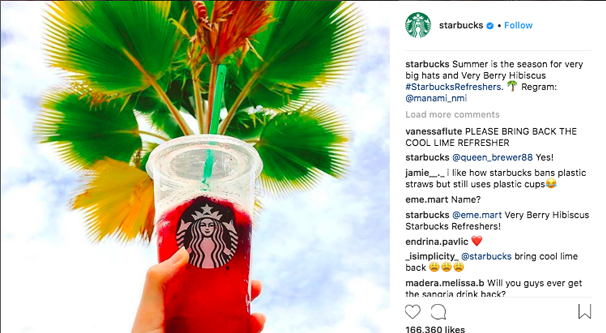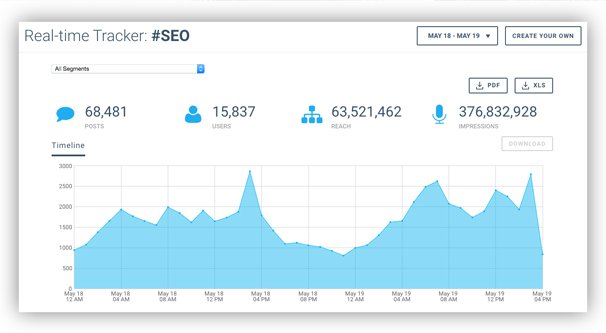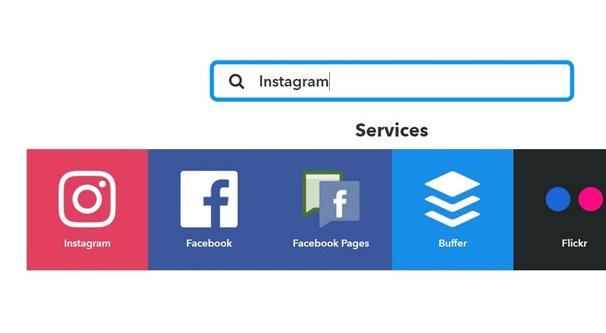User-generated content is a valuable resource for growing any social media profile, but it’s especially effective with Instagram. Since Instagram is a platform where producing the right kind of content to engage your users is extremely important, user-generated content is a shortcut. After all, who knows better what kind of content your users want to see than your users themselves?
What Is User-Generated Content, Specifically?
So what is user-generated content anyway? Basically, it’s any content created by your users. Anything your users is posting is user-generated content, but it normally doesn’t really matter to your marketing efforts.
In order to make use of user-generated content, you need to post it on your own page. However, posting user content without permission is just content theft and is a copyright violation. It happens all the time, and Instagram has a defined process for dealing with copyright violations, generally leading to the removal of the content and possibly the suspension of your account. So, you know, don’t do that.
So how do you get around that hurdle? It’s simple: don’t post anything you don’t have permission to post. What you need to do is gain permission to post content you want to post, and make sure you’re properly crediting the original creator of the content.
The Benefits of User-Generated Content
What are the benefits of using user-generated content? There are actually a few of them.
First of all, user-generated content is authentic content, not branded marketing content. It feels more genuine, and users generally agree that it’s more authentic. When a user is creating content for you, it comes from that user’s creativity, and not because you’re paying for it.
User-generated content has the added benefit of filling out your content calendar. One of the more difficult problems you face as a social media marketer is always having something to post. With user-generated content, you’re able to fill gaps in your schedule with content from your users.
Since you’re featuring content from your users, those users start to view it as a sort of competition. Like siblings competing for the affections of their parents, users will compete to feel recognized by the brands they love. Sure, some people are cynical and see through that feeling, but many are captured by it, and some will take it to extremes to compete for the best content.
On top of all of that, numerous studies have shown that user-generated content on Instagram typically receives as much as 50% more engagement than branded images. What’s not to love?
How to Build Your User-Generated Content Strategy
The first thing you need to do if you want to make use of user-generated content is determine if your brand can even generate user-generated content. Instagram is a highly visual platform with a lot of creative people on it, but it’s also very heavily leaning into a B2C angle; B2B businesses have a harder time both generating user-generated content and finding a niche on Instagram itself.
You need an audience of reasonably engaged users before you try to solicit user-generated content. If your audience is too small, no one will really be interested in making content for you. If your audience isn’t very engaged, the low turnout for a user-generated content event might discourage future participation. This is yet another reason why it’s so essential that you maintain a quality audience and avoid buying fake followers.
If you think you can pull it off, step one of user-generated content is to figure out what angle you’re coming at it from. Is your brand going to focus on connections, family, and the positive feelings of love and affection? Are you focusing more on a certain type of color or aesthetic? Do you have themes you want to run with? There are a ton of different approaches.
The key here is to make sure whatever approach you choose jives with your brand. A brand selling pizza is probably going to have a hard time encouraging users to submit adventure photos; pizza generally isn’t a travel food. Conversely, an athletic apparel brand will have a better time soliciting photos of people in action using their products than they are staged, aesthetically pleasing shots of products on their own.
Step two is to create a hashtag for people to use. Some brands like to create hashtags for each individual campaign they use, while others are more likely to create one branded user-generated content hashtag and use that indefinitely. I generally recommend the second option, since it creates an ongoing pool to pull from.
All you really need for a good hashtag in this case is something unique to your brand. You can’t just use #UGC, because a generic tag might be used by any number of brands, and you can’t poach your user-generated content from other companies. A user giving permission to one brand to use their content doesn’t mean you have permission to use it as well.
Your tag can be as simple as #brandUGC, or it can be a catchy theme. A few examples include:
- #BufferCommunity, a generic user-generated content tag for Buffer users to share photos of themselves from around the world.
- #AerieReal, a branded user-generated content focused on real life photos – unedited, unfiltered, untouched – of real people wearing their products.
- #WayfairPetSquad, a branded tag specifically focusing on the pet owners in their audience.
- #RedCupContest, a non-branded but unique tag Starbucks created for a seasonal campaign. They released red cups and asked users to take photos of theirs, and got thousands of responses.
You can view more, and a deeper analysis of the ones I mentioned above, at this Hubspot link.
For step three, you need to encourage your users to actually use the tag. There are a few ways you can do this.
First up, put the tag in your Instagram bio and encourage users to use it there. Something simple like:
“We love when you tag us! Use #BrandUGC and if we like what we see, we’ll share it!”
This line serves two purposes. First of all, it informs users that you have a user-generated content tag they can use. Second, it’s implied permission. When a user uses your UGC tag, they’re giving permission for you to use the content, since you have it disclosed up front that you will. You’re not obligated to use it, but they’re giving you permission to use it by using that tag. Think of it like a line of fine print, out in the open.
The other thing you should do is seed the tag a bit. Get some of your employees, some of your most engaged brand advocates, and other such users you can “control” to post some content with your UGC hashtag. This seeds the hashtag with content so it’s not empty, so no one feels like they’re taking a risk being the first. It also allows you to feature that “user” generated content on your page.
This proves to users that you will, indeed, showcase the content they share with the tag. You’re not lying about doing that. Plus, anyone following your account will see these posts in your feed.
The key here is to make sure the description/caption for your user-generated content discloses what it is, tags the original creator, and includes a call to action. Something like:
“We love @username’s flawless look in this snap! Using OurProduct just completes the look, wouldn’t you say? If you’re feeling snazzy, take a shot using our product and tag us with #brandUGC. You may be the next to be featured!”
If you don’t have enough users or seeds to buff up your hashtag’s content, you can also run a user-generated content contest. Offer a few products or gift cards and ask users to submit content around a theme to your hashtag. Then once an arbitrary deadline has been met, you can reward some users, and feature some content. To make sure you have a steady flow of user-generated content, you can keep the contest going. Reward a $10 gift card each week on an ongoing basis, or larger prizes once a month, or whatever fits your brand.
Step four is the most important step for properly using user-generated content. What is it? Monitoring your hashtag! You need to keep an eye on the tag you’ve created, and pick out the best posts to feature on your account. Every post you pick to feature needs to be high quality and matching your brand aesthetic.
When you feature a user’s content, you need to make sure to give them proper credit. Depending on whether you want to include their caption or write your own, you need to formulate the right kind of description for your post. Make sure to add in the call to action.
If you see content you like and want to share, but you don’t have space in your editorial calendar for it, bookmark it and save it to a collection to use later. Instagram includes a bookmark feature now, so you can build a resource of the top-tier user generated content for later features.
An optional step five is to use social listening, hashtag searches, and just plain old searches to find content users post about your brand but don’t tag with your user-generated content tag. Depending on the scale and popularity of your brand, people might have been making user-generated content for you for months or years already, and you didn’t know because they didn’t tag you, or they used hashtags you weren’t actively monitoring.
When you find this content, keep in mind that you can’t just take it and use it like you can user-generated content that has been posted to your hashtag. Unlike your hashtag, there’s no implied disclosure here. Instead, send a DM to the user and ask if you can feature it on your page, with proper credit. Many people will be happy to have to exposure, though some may refuse and others may want to get paid.
It’s up to you if you’re willing to pay for some user-generated content. On the one hand, it can encourage creators to make top-tier user-generated content for you. On the other hand, it can discourage free users from sharing their own user-generated content since they aren’t getting paid for it. You can make the determination yourself on this one.
Cross-Platform User-Generated Content
Remember that your social accounts are all kind of linked together, even if each network is a separate entity with its own audience. If you have an active audience on Instagram and a much smaller audience on Twitter, you can use the user-generated content you get from Instagram and post it on Twitter too. Twitter can link back to the source Instagram account, but the powerful graphical content can help build your Twitter audience. The same can work in reverse as well; look for or solicit user-generated content on Twitter and cross-post it on Instagram.
In some ways it can be easier to find user-generated content on platforms other than Instagram, simply because it’s easier to search Twitter and, in some cases, Facebook for your brand than it is Instagram. That’s not always the case, and really you can get your user-generated content from any platform, just make sure you’re properly crediting the source.
Your Turn
What are your experiences with user-generated content? Have you used it to great effect? Are you just starting to experiment with it? Have you run into issues with it in the past? I’d like to hear your stories, so let me know in the comments how it’s worked for you.










